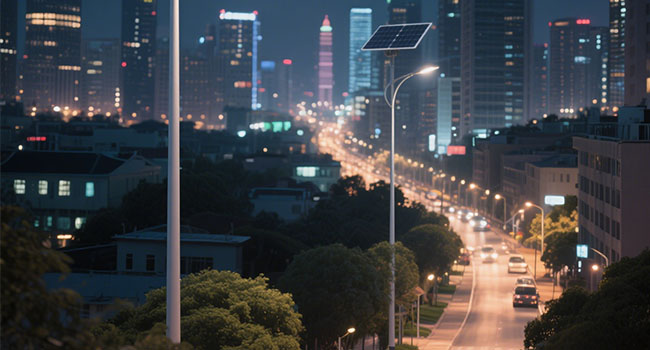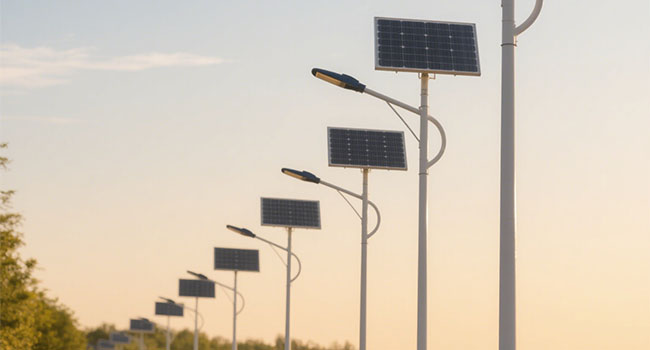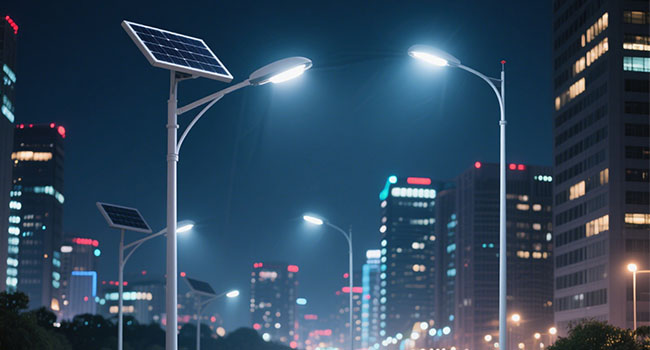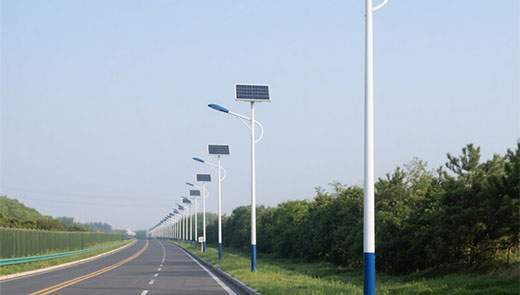LED street lights vs HPS street lights: What's the Diff?
In the evolution of urban infrastructure, street lights have always been an important measure of public service. From kerosene lamps to incandescent lamps, from High Pressure Sodium (HPS) lamps to Light Emitting Diodes (LEDs), every light revolution has been accompanied by a leap in energy efficiency, longevity and safety. Currently, the world is in a critical period of replacement between traditional HPS street lights and modern LED street lights - the former ruled the outdoor lighting market for decades with its high luminous efficacy, while the latter redefines the industry standard with its disruptive technology.We will start from the core dimensions of energy efficiency, cost, performance and environment, and through data comparison and scenario analysis, we will reveal the essential differences between the two, and explain why LED is becoming the inevitable choice for smart cities. Whether you are a municipal planner, project purchaser or a member of the general public, understanding these differences will help you to grasp the future trends of lighting technology.

Efficiency and brightness
Among the core performance indicators of street lights, luminous efficacy (lm/W) is a key parameter for measuring energy efficiency. Traditional high-pressure sodium (HPS) lamps used to dominate the market with luminous efficacy of up to 90 lm/W, but with the breakthrough of LED technology, this advantage has been completely overturned. According to the EU 2021 energy-efficiency standards, the luminous efficacy of A-rated LED street lights has exceeded 210 lm/W, which is more than 2.3 times that of HPS.
Circuit design
The power factor of LED street lights is as high as 95%, while that of HPS is only 85%, which means that HPS generates more reactive power losses in the circuit. In addition, HPS requires ballasts (e.g. 34W for a 400W lamp), whereas LEDs do not require such components, which directly reduces additional energy consumption.
Harmonic impact
HPS circuits generate high harmonics, which not only increase power consumption by 10%-15%, but also reduce the stability of the power grid; LEDs do not have harmonic pollution problems.
Light distribution efficiency comparison
HPS relies on curved reflectors to concentrate light, but this process results in 30%-35% light loss, and the actual output efficiency is only 65%-70%. LEDs can reach 80% light efficiency through the secondary optical lens design, and if the tertiary optical design is used, the efficiency can be further increased to 85%-90%.

Costs of HPS and LED street lights
Procurement cost
From the dimension of procurement cost, HPS street lights and LED street lights show a significant difference: the unit price of HPS street lights is in the range of 50-150 US dollars, while the unit price of LED street lights is up to 200-500 US dollars, with a difference of 2-4 times of the initial procurement cost, which makes some of the budget-sensitive projects face short-term cost pressure when making decisions. However, if you extend the perspective to the long-term operation cycle, the comprehensive cost advantage of LED will gradually come to the fore.
Installation cost
In the installation process, HPS street lights require thicker cables due to the high currents generated by 400W power, resulting in a 30%-50% higher cable procurement cost than 250W LED streetlight systems, and this difference is particularly significant in large-scale streetlight projects - for example, for 1,000 street lights, the cable cost alone could be hundreds of thousands of dollars more. This gap is particularly significant in large-scale streetlighting projects - for 1,000 street lights, for example, cable costs alone can add hundreds of thousands of dollars.
Operational cost
In terms of operational energy consumption, the difference is starkly contrasting. A single 400W HPS streetlight costs about $146 per year for 10 hours of lighting per day, while a 250W LED streetlight of equivalent brightness costs only $73 per year, a 50% savings. The difference in annual electricity costs for 1,000 street lights is more than $73,000, and the cumulative savings over five years will cover the difference in the initial purchase cost.
Maintenance costs
In terms of maintenance costs, the 24,000-hour life of HPS street lights means that they need to be replaced four times in a 10-year cycle, whereas LED street lights, with a life span of 250,000 hours or more, only need to be replaced once in 10 years, reducing maintenance frequency by 70%. If labor costs and downtime losses are taken into account, LEDs can save hundreds of thousands of dollars in maintenance expenditures within 10 years.
Comprehensive view, although LED initial investment is higher, but its energy-saving, long life and low maintenance needs to make its whole life cycle cost (TCO) in 5-8 years lower than the HPS. coupled with the LED technology to 10%-15% per year rate of price reductions, the future cost-effective will be further optimized, becoming a better solution for long-term investment.

How long do HPS and LED street lights last?
Compared to the 24,000 hour limited life of HPS street lights, LED luminaires have a very long life span of 25,000 to 200,000 hours, depending on chip quality and heat dissipation design. Based on a standard scenario of 10 hours of lighting per day, the theoretical life cycle of an LED streetlight can be as long as 7 to 55 years, while an HPS streetlight only lasts about 6.5 years, a difference of more than 10 times.
U.S. Electric Lighting measured data show that HPS street lamps in the middle of the life (12,000 hours, about 3.3 years), can still maintain 90% of the initial light output, showing a certain degree of stability; but with the use of time to the end of the period (24,000 hours), the luminous flux will fall to 80% of the initial value, and then must be replaced as a whole. On the contrary, the LED, its light decay curve is more gentle, high-quality chips can even after 50,000 hours (about 13.7 years) still maintain more than 70% of the luminous efficacy, and do not need to frequently replace the light source components.
This difference in life expectancy can have a substantial impact on municipal projects. Take a medium-sized city with 5,000 street lights as an example, if HPS street lights are used, a full replacement of lights is required every 6.5 years, which involves a number of expenditures such as aerial work truck rental, labor costs and traffic control, etc.; while the replacement cycle of LED street lights can be extended to more than 10 years, with the maintenance frequency reduced by more than 60%.
Especially in highways, mountain roads and other remote or high-risk installation areas, the long life characteristics of LED can significantly reduce the risk of aerial work, reduce emergency maintenance costs, while avoiding lighting blind spots caused by lamps and lanterns failure to enhance public safety and security level. From the perspective of full life cycle management, the long life attribute of LED is not only a technological breakthrough, but also a key pivot point to improve the efficiency of urban operation and maintenance.
Time to full brightness
The instantaneous response capability of LED is an advantage that HPS cannot match. Time to Full Brightness LED can reach full brightness in 0.1 seconds, perfectly adapted to motion sensors, especially suitable for parking lots, walkways and other security scenarios - when abnormal movement is detected, the light will immediately come on, simultaneously improving the clarity of the monitoring screen and effectively deterring potential risks.
On the other hand, HPS street lights require 5-10 minutes to warm up to full brightness. This means that in emergency situations (e.g., emergencies), HPS is unable to provide timely illumination, creating a blind spot, which may lead to the loss of critical images. The start-up delay makes it difficult to meet dynamic security requirements, while the “instant-on” feature of LEDs allows lighting to be seamlessly linked to intelligent security systems, making them the preferred solution for modern smart cities.

Visibility
The visibility of lighting is directly related to road safety, LED street light has a color rendering index (CRI) of 70-80, which is close to the level of natural light, and can accurately reproduce the color of objects (such as vehicle color, road markings), which significantly improves the environmental recognition of drivers and pedestrians. HPS has a CRI of only 20-40 (less than 30 in most scenarios), and the light is a single orange-yellow color, which leads to distortion of the color of objects and may even hide potential safety hazards. HPS has a CRI of only 20-40 (below 30 in most scenarios), resulting in distorted colors of objects, which may even mask potential safety hazards (e.g., color recognition of bloodstains, chemical spills).
Color temperature
In terms of color temperature performance, LED street lights show flexibility that traditional HPS street lights cannot match. Its color temperature ranges from 2700K warm light to 6500K cold light: 2700K warm light is suitable for commercial streets, which can create a warm atmosphere and enhance the night shopping experience; 4000K neutral light is suitable for urban main roads, which balances visual comfort and recognition; 6500K cold light is commonly used on highways or around airports, which reduces visual fatigue of drivers and extends the effective observing distance by means of high brightness light. This kind of scenario-based adaptability enables LEDs to dynamically adjust the light environment according to the functional requirements of different areas.
On the other hand, HPS street light, with its color temperature fixed at 1900-2800K, is unable to respond to diversified lighting needs. In schools, hospitals and other areas that require a soft light environment, the strong light color of HPS will exacerbate the sense of visual oppression; and in traffic hubs and other scenes that require a high degree of alertness, its single light color is difficult to guide the attention of the color temperature changes. Measurement data shows that the identification rate of potential accidents on roadways with LED street lights is 30% higher than that of HPS, and the clarity of surveillance cameras is 50% higher - meaning that the police can lock on to the target faster through high-definition images, and pedestrians can avoid risks in a more realistic light environment. From the perspective of urban safety ecological construction, the color temperature flexibility of LED is not only an upgrade of lighting technology, but also an important underlying support for the public safety system.
Environmental sustainability
In terms of environmental sustainability, LED street lights show significant green advantages: 1,000 250W LED street lights can reduce 280 tons of CO₂ emissions per year compared to 400W HPS street lights, which is equivalent to planting 15,000 trees, significantly reducing the carbon footprint. In terms of hazardous material treatment, HPS bulbs contain mercury and need to be treated through professional processes to avoid pollution after scrapping, while LEDs do not contain heavy metals and more than 95% of the components can be recycled, in line with the requirements of the circular economy.
Light pollution control level, LED through directional light distribution technology will reduce the scattered light by 30%, accurate control of the light projection range, while the diffuse reflection characteristics of the HPS is easy to lead to light pollution exceeds the standard, not only interfere with astronomical observation, but also may have an impact on the residents at night rest. Combining the three, LED street lights reflect a lower environmental load throughout their life cycle, from production to end-of-life, and become an important enabler for the construction of low-carbon cities.
In terms of energy efficiency, cost, life span and safety, LED street lights have demonstrated a comprehensive surpassing of HPS. Despite the high initial investment, its long-term economy, environmental protection and intelligent adaptability (e.g. linkage with IoT system) make it an inevitable choice for smart city construction. With the policies of many countries around the world accelerating the elimination of high energy-consuming light sources, LED is leading the green technology revolution in the street light industry.




